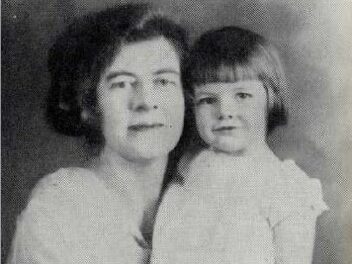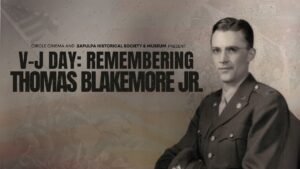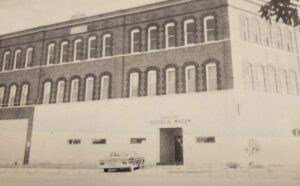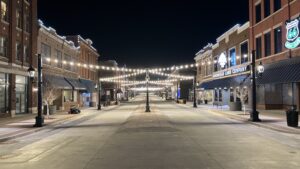Rachel Whitney, Curator,
Sapulpa Historical Museum
This is “Oklahoma Mary Part Two,” as it is the continuation of Part One that we opened the discussion for in August this year. In “Oklahoma Mary Part One: Life Begins,” we described the life, the work, and the extraordinary life of Sapulpa’s author, Mary McDougal Axelson. We released Part One on Axelson’s birthday, August 13th, in celebration of her life. Part Two will focus on more of her work, activism, her motherhood, her daughter and her work, and the tragic end to the author’s life with cancer, on November 27th, 1973.
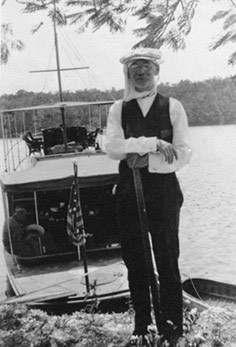
Backstory: Mary Carmack McDougal Axelson’s parents brought their three daughters to Sapulpa in 1904. D.A. McDougal, the father, became the town’s fourth mayor; he was also a lawyer and judge. Mary graduated boarding school in 1906; she went to University of Oklahoma, and became a journalist. She worked for many local newspapers, and at the age of 19 worked for a magazine in Washington. By 1923, she would marry an OU professor, Ivar Axelson.
They became parents at an older age, for that time. At age of 37, Mary gave birth via Cesarean, to their daughter, Mary Ivonne Axelson. The family moved to New York, and while Mr. Axelson worked on his Ph.D. at Columbia University, Mrs. Axelson began writing as a playwright about motherhood.
In just a few short years, Mary Axelson’s play would become a cinema film, showing all over the country in 1939 – the film and book: Life Begins.
At the end of her life, the family moved to Florida. She had leukemia and sadly spent the last two years of her life, in and out of the hospital.
This week in Sapulpa history is Part Two:
Although Warner Brothers’ take on Life Begins (1932) was pretty well received in the box office, their remake, under the name A Child is Born (1939), was not a smash hit the studio was looking for. “The studios were eager for scripts, since 1939 was a time when depression weary people flocked to the inexpensive entertainment that films offered. The movie house was a place where national myths were upheld, giving citizens hope in the future, and a welcome respite from a dull and uncertain reality through a world of fantasy and dreams. In this case, a ‘formula’ that worked once was tried again.”
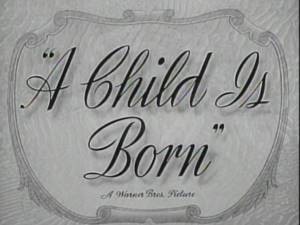
It seemed Mary’s wishes were rejected. “Mary was avid to have a role in the production, but Hollywood’s reputation for heartless cruelty was upheld when producer Sam Bischoff told a demoralized Mary that they would make the picture ‘horrible’ because that’s ‘box-office.’”
Mary wrote in her diary, a journal she kept for her entire adulthood about her experience in motherhood, “The one bright monument of my writing career to be sullied and wrecked.”
With movie stars Geraldine Fitzgerald, Jeffrey Lynn, Gale Page, Gladys Geroge, and Spring Byington, Mary’s hope for a successful film was in place. “Mary haunted the studio each day, maneuvering her way onto the set. Fearful that if she left during the lunch break, she would not be allowed back in, she hid and ate fudge. Ignored by the staff, she brooded, ‘I am flung out, pushed aside, forgotten as if I didn’t exist,’” she wrote in her diary.
“Mary worked exhaustingly to finish a draft which was submitted and rushed into print. The book jacket featured the film’s stars in an embrace with copy reading ‘The novel of every woman’s great adventure.’ In what was one of the original movie and novel marketing package tie-ins, readers were told, ‘Read the book – see the picture.’”
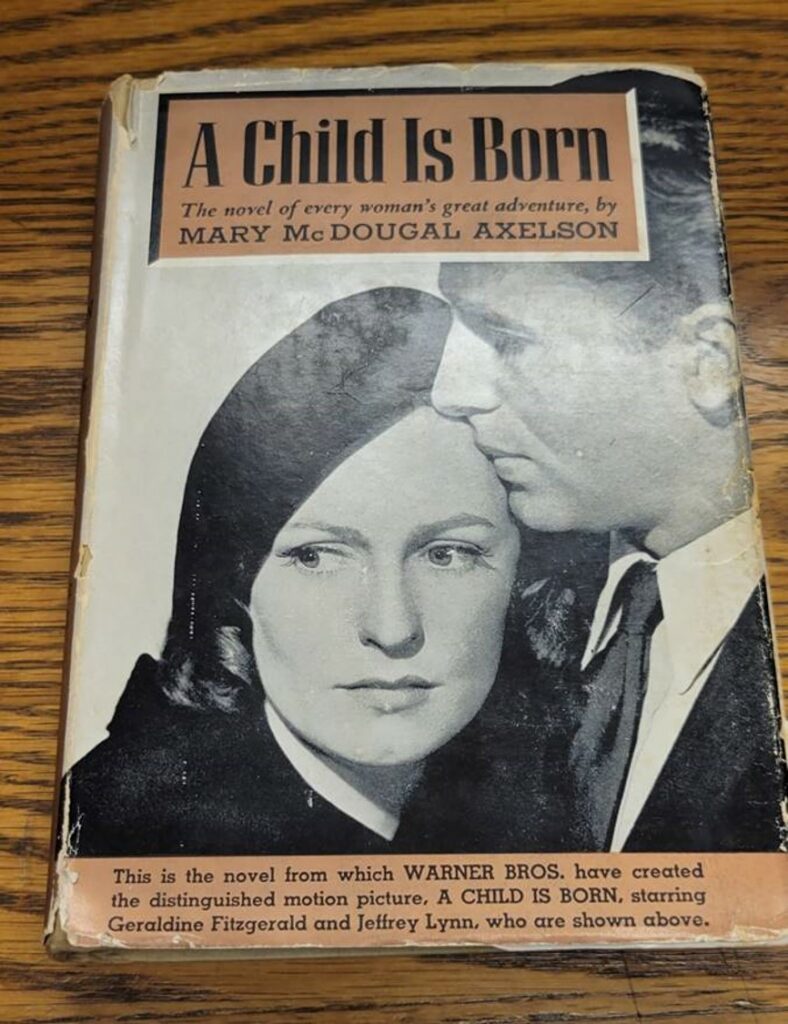
When the film was released, Mary thought Sapulpa, or the very least, Selmer, Tennessee, where she was born, but Sapulpa where she was raised, would be the ideal location for the premiere. However, Warner Brothers sent her to Kansas City. In her diary she wrote: “‘I am sick of being exploited for Warners’ benefit…They are making a fortune from the dream of my heart.’ She requested a salary for promotional work and when she was turned down, refused to attend” the world premiere. “As a final insult the studio sent out press releases saying Kansas City was Mary’s birthplace and that she would attend the opening.”
In Sapulpa for the premiere, the Yale Theater “was filled with Sapulpans, most of them women. They applauded as Mrs. Axelson’s name flashed from the projection room and after the showing, they crowded around the author’s sister and nephew,” Mrs. Jennie Myrtle MacKay and Archie MacKay.
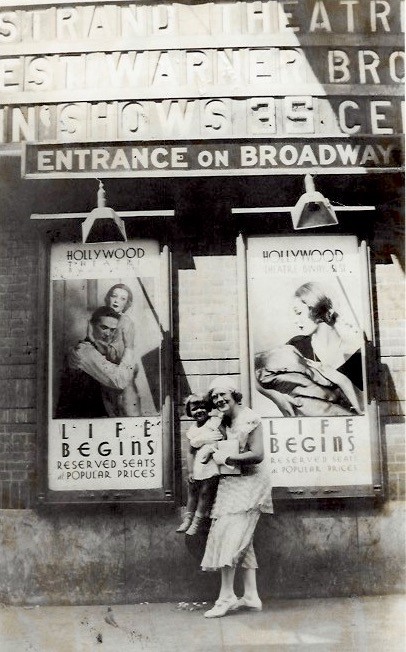
As stated earlier, the journals Mary kept were about her experience into motherhood. The play was based on her journal entries, thus becoming a movie, and a remake of the film. Mary’s experience in motherhood intrigued many readers and movie-goers. “Women liked and approved the film for general viewing.” In her diary, Mary wrote: “‘The challenge of motherhood is precisely the same appeal to heroism that was felt by the young men who went to the trenches during the great war. Adventure, the gamble with fate – that is what motherhood means.’”
With A Child is Born, the novel, “many women enjoyed the novel,” and it was a success. The novel was translated into six languages. Mary wrote in her diary about the success as she looked back on her career, “‘I once had a taste of triumph when my first play was produced by Warner Brothers and shown all over the world.’”
In December 1941, just under two years after the movie came to Sapulpa, Mary McDougal Axelson came to visit Sapulpa. “When cowboy melodeer Gene Autry comes back home here soon to Sapulpa to do his ‘old trick’ for a day at the railroad dispatcher’s office, according to his erstwhile pals here, there’s goin’ to be such a time in the old town that bronco bustin’ will look like a taffy pulling. And speaking of homecoming for notables, Sapulpa puts out its best foot when it greets Mary McDougal Axelson, author and playwright…”
Mary and her family would often visit Sapulpa. “Mary McDougal Axelson, Sapulpa’s own writer ‘who has made good in the big city,’ is back home making some of the old rounds and incidentally full of more ideas for stories and plays than you ever heard of!”
The family had made a home in Florida. D.A. McDougal had taken his wife and daughters to Florida as a second home as they lived in Sapulpa. But after his retirement, Judge McDougal and his wife moved to Florida to spend their late years in the south.
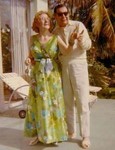
Mary, her husband, Ivar, and their daughter Mary Ivonne, would also live in Florida for some time. The three would often live between Miami, Florida, Washington, New York, Oklahoma (Norman and Sapulpa), and Los Angeles.
In 1945, Mary’s sister, Violet McDougal, and herself wrote a book of poems. These poems were read over the radio from Miami, Florida, and many listeners in Sapulpa got to listen to a local author read her own pieces. “Poems of Miss Violet McDougal and Mrs. Mary McDougal Axelson will be broadcast from Miami, Fla, this evening at 8 o’clock, Sapulpa time. Mrs. Axelson will read them at the request of the Miami station.”
In 1955, D.A. McDougal passed away in Coral Gables. “McDougal crusaded for prohibition and supported women’s suffrage in Oklahoma. During the administration of Franklin Delano Roosevelt, McDougal assisted the legal advisor for the U.S. State Department. During the land boom of the early 1920s, McDougal came to Florida with his daughter, Mary McDougal Axelson. Here, he teamed up with her husband, Ivar, and began a permanent home in Coral Gables, and spent his last years fighting the expansion of the Everglades National Park and the retention of his oil rights.”
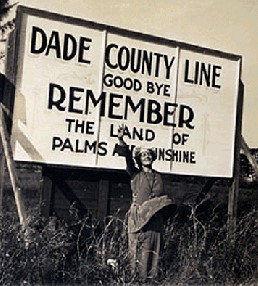
“Ivar Axelson served as president of the Everglades National Park Landowners Association and led the Association for the Best Use of Florida Lands. He crusaded for many years against the expansion of Everglades National Park in Monroe County where he and Daniel McDougal owned a great deal of land.”
The same year, the daughter of Mary and Ivar, Mary Ivonne, made her debut in show business. “In 1955, chosen out of 1,000 contestants to train at the exclusive Actors Studio under Lee Strasberg and Elia Kazan. Sat between Marilyn Monroe and Eva Marie Saint in their first session. Became a member of the Actors Studio Theatre along with Sidney Poitier, Bruce Dern, Jane Fonda, Rod Steiger, Eli Wallach, Rip Torn, Burgess Meredity and dozens of other future mega-stars.”
Mary Ivonne went by her stage name, Sandra Stevens.
In 1958, the Axelson’s moved to a new home at 3590 Crystal View Court, Coconut Grove, Miami, FL. Some of Mary’s Sapulpa friends received a Christmas card from the family with their new address and picture of their new home. She also sent her poetry book “The Lonesome Angel.” The Sapulpa Herald praised her work “The poems are quite good, but then Mary is established well in the literary world, and everything she does is good!”
Now in her late 20s, Sandra Stevens or “Mary Ivonne seemed to have had a promising future at one point.” Similar to her mother being nicknamed after where she’s from like “Oklahoma Mary,” the Miami Daily News named her a “Gables Girl.”
The article “cited her ‘meteoric rise,’ a phrase used in the title largely to reflect her accepting the risk of making the big leap to the big time of New York and Broadway.” From her supporters, “there is ‘no net to catch her.’”
Sadly, Broadway and Hollywood were not an easy career to begin or even keep. “But just as Mary Ivonne would allude in this same article, Broadway would prove impossible to break into. ‘New York is a tough nut to crack,’ she is quoted as saying, “Some theatrical agents use the same girls over and over again, and it’s useless to try to get in through them.’”
Sandra Stevens kept working. “‘I feel as if Broadway from 55th Street to 41st is all mine,’ she exclaimed. But it was noted that she had been featured in a film, ‘East of Broadway,’ and that she would appear in a movie, Sonny Tufts.”
The same article often boasted her optimism. “The article exudes with all of the overly optimistic dreams that Mary Ivonne must have possessed at the time. But the $100 that she left home with to strike out for fame and fortune would be gone in a week, and her sum total of official movie credits is relegated to the role in Cop Hater, a crime film noir movie made in 1958.”

Mary Ivonne married Harry Cropper in 1964. Mary Ivonne and her husband moved to New York. Mary Ivonne owned a club in New York, and was also a club singer.
The Axelson family, specifically both Marys, had an estranged relationship. “Mary McDougal’s later years were marred by misspent energies, family misfortunes, grief, and illness. Her own idealized dream of motherhood was shattered by a series of deplorable events in the life of Mary Ivonne, resulting in their estrangement.”
The turn of the new decade, the 1970s, were the hardest years for the family. In 1971, Mary McDougal was diagnosed with leukemia, at the age of 80. The following year, Mary McDougal’s husband, Ivar, passed away in Coral Gables, Florida. Mary McDougal was in and out of the hospital with her cancer.
Mary McDougal would die the following year in her hospital bed in Miami.
This week in Sapulpa history, on November 28, 1973, articles across not only Florida papers, not only Oklahoma papers, but across the country, read about the death of Mary McDougal Axelson.
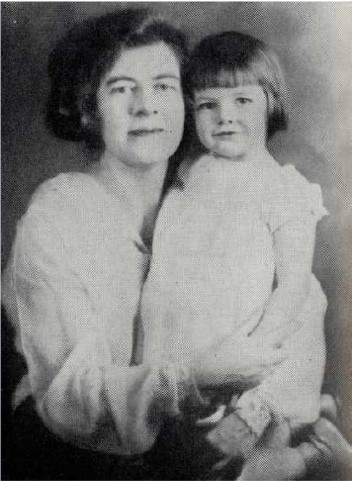
“When Mary was 82, exhausted with life and incurably ill, she was hospitalized in Miami. Then, four days before she died, as though she herself were writing one of the contrived endings for more than twenty melodramas she authored – patients, nurses, and doctors were invited to Mary’s room to watch with her, a televised screening of A Child is Born.”
One of Mary’s dreams was to be a writer. She also kept her dream of being a mother. “The irony of Mary McDougal Axelson’s life is that the inspiration behind the creation of her career work – the play, the movies, the book – the birth of her daughter, Mary Ivonne Axelson, would ultimately become the reason for her death.”
The relationship between both Marys became very toxic. “For after an estrangement between the two that might have encompassed most of her life, sometime on November 26, 1973, while visiting her elderly mother in the hospital as she lay in bed suffering from leukemia, Mary Ivonne beat her mother in a fit of rage and left the scene, leaving her mother on the floor bleeding from a head wound. Mary McDougal Axelson would die from her injuries the next day.”

According to the police report, “Mary McDougal Axelson died Tuesday, 22 hours after she was beaten in her hospital bed. Police said they were seeking Mrs. Axelson’s daughter, Mary Ivonne Cropper of New York, for questioning. Joseph McAloon, administrator at Doctor’s Hospital said Mrs. Axelson was admitted Nov 1. On Monday, McAloon said Mrs. Cropper visited her mother then left the room abruptly. Mrs. Axelson’s private nurse was sent out to ‘obtain something special for lunch.’ He said the attack occurred while the private nurse was out of the room. Mrs. Axelson called for an aide who found her bleeding badly from the mouth. An autopsy by the Dade County Medical Examiner’s Office showed Mrs. Axelson died from a brain hemorrhage caused by a blow to the head. According to McAloon, Mrs. Axelson told them before she died that her daughter had beaten her.”
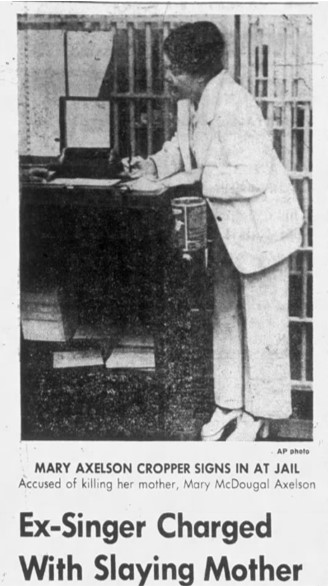
Mary Ivonne was arrested for second degree murder December 3, 1973. “A former New York City nightclub singer has been jailed on second degree murder charges in the beating death of her mother. Mary Axelson Cropper, 44, surrendered to police and was booked into Dade County jail.
“Stories of the 1973 murder and the trial that ensued in 1975 were covered by dozens of newspapers across the United States.”
The newspapers announced that “Mrs. Axelson willed one-third of her $850,000 estate to her daughter.” This meant that Mary Ivonne Axelson Cropper would inherit $280,000 ($1,886,657 today) from her mother’s estate after Mary McDougal passed*.
“A woman on trial for the murder of her mother could inherit, if acquitted or convicted of a lesser crime, more than $280,000, according to Robert Gunn, executor of the estate.”
In April 1975, witnesses, psychiatrists, and many others testified in the trial. “Psychiatrists testifying at her trial said that she suffered from chronic schizophrenia throughout her adult life, and had been under extreme emotional stress at the time of the incident.”
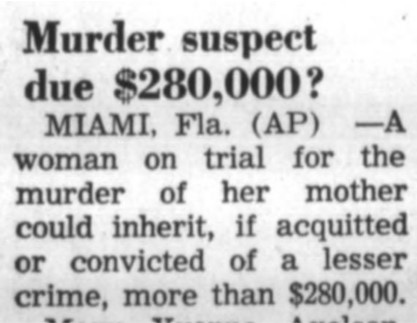
Mr. Harry Cropper, now ex-husband after their 1967 divorce, also testified. “Harry Cropper testified that Mary Ivonne told him she hit her mother because ‘she’d never in her whole life been able to touch her.’”
At the end of the trial, the verdict was read. “In another twist of fate, she was ultimately found innocent by reason of insanity. Later, she would inherit her parents’ estate.”
“Mary Ivonne died in New York in 2007,” just a few weeks before her 78th birthday. Today, her daughter in Florida is a psychiatrist. In addition, the University of Miami has a large collection of works, documents, letters, and photographs of the McDougal and Axelson family, and the Everglades Library and Museum keep their biographies and work.

In more recent development, Yellow Brick Studios and Legacy Vision Films announced two developments coming along for a piece titled The Death of Birth and another called Trials of Two Marys*.
*Note: the last update for both titles were in July 2023.
The Death of Birth: “Based on the life of Mary McDougal Axelson, whose experiences in giving birth inspired her to write a play that was made into the movie Life Begins, which was a hit in 1932.” There have been two drafts from 2018 and 2019. “Continuing research to this matter is being pursued for which a few more drafts of the script are likely to ensue before hopefully a premiere of this play can occur possibly in 2024 at TAG – The Actors’ Group.”
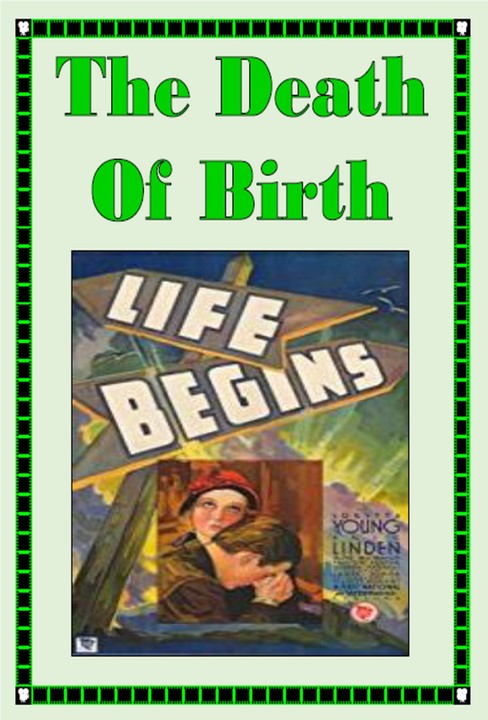
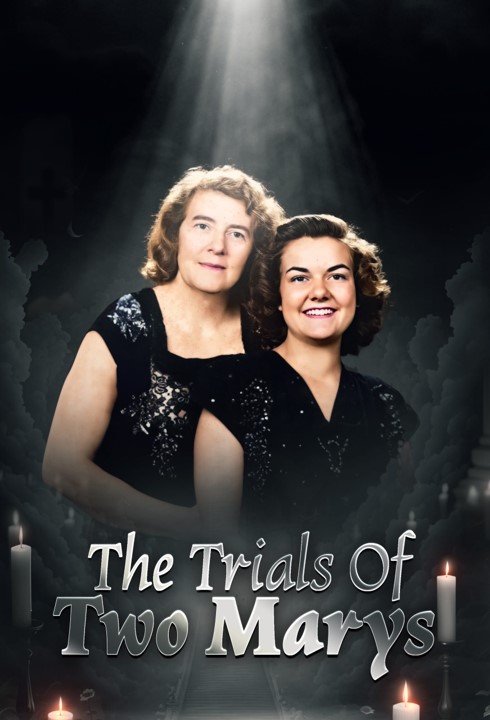
Trials of Two Marys: “Mary McDougal Axelson, the famous writer who inspired the Hollywood hit, Life Begins, is dead and is on trial in heaven for her failures as a mother to Mary Ivonne Axelson, her daughter, who is also on trial back on earth for the murder of her mother.” This is supposed to be an extension to The Death of Birth. “Principal photography is scheduled to commence either in December 2023 or January 2024.
(Yellow Brick Studio; IMDb; Playbill; Chronicles of Oklahoma, Vol. 60, No. 3, 1982; Sapulpa Herald, August 14, 1915, March 11, 1918, July 2, 1921, July 10, 1923; Creek County Republican, July 5, 1918; Tulsa World, January 25, 1940; Everglades Library and Museum; The Mercury, April 4, 1975; Oklahoma City Times, November 28, 1973; April 4, 1975; Oakland Tribune, December 4, 1973; Sapulpa Herald, November 28, 1973)

